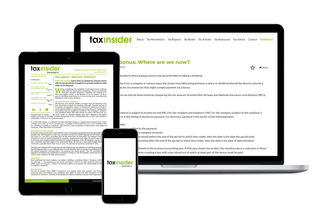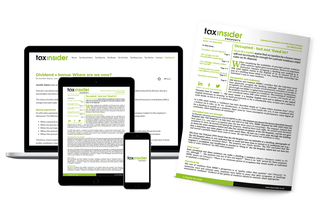New articles published
in August 2024
-
The Bank of Mum and Dad! Buying property for children
Buying property for children can be a strategic way to secure their financial future. However, it is essential to understand the various methods available, and their associated tax implications.
Jennifer Adams looks at different methods and tax implications of parents buying property for children. -
Taking advantage of the rent-a-room scheme
The rent-a-room scheme allows owner-occupiers and tenants to earn rental income tax-free up to their rent-a-room limit by letting one or more spare rooms in their home. If the rental income received does not exceed the permitted amount, the income does not need to be reported to HMRC.
Sarah Bradford explains how the rent-a-room scheme can be used to generate tax-free rental income from letting a room in one’s main home.
-
Converting a property into an HMO (Part 2)
Without further ado, continuing the case study from part one of this article series, my very basic analysis of Yasmin’s expenditure on the conversion is set out below.
Lee Sharpe continues his consideration of the tax implications for adapting a property for designation as a house in multiple occupation (HMO).
-
Unexpected tax consequences on part disposal of garden
Capital gains tax (CGT) relief on a disposal of an only or main residence (or principal private residence (PPR) relief, as it is commonly known) is familiar to many taxpayers.
Mark McLaughlin points out that the sale of part of a dwelling’s garden before the disposal of the dwelling could have unexpected tax consequences.
-
Q&As with Arthur Weller
Some of our most popular articles
-
Joint property letting vs partnerships
Property partnerships seem popular these days – typically, as a stepping-stone to greater things. Regular readers will know that I have long criticised HMRC’s published position on whether a property partnership exists, as distinct from simply co-owned property. My argument is that HMRC has drawn up its guidance to set an unreasonably high threshold to ‘make the grade’ as a partnership.
Lee Sharpe looks at whether a joint property letting activity amounts to a partnership, and why it is relevant to landlords.
-
Main residence relief and multiple residences
Most people do not expect to have to pay capital gains tax (CGT) when they sell their home. Private residence relief (also known as main residence relief or principal private residence relief) normally applies in full when the property has been the taxpayer’s only or main residence throughout the whole period for which they have owned it.
Sarah Bradford outlines the concept of a ‘main’ residence for capital gains tax purposes.
-
That old boiler: Repairs or improvement?
The government (HMRC) has become increasingly worried about the volume of small and medium-sized enterprise research and development (R&D) tax credit payments where a company claims to have undertaken eligible R&D activity (and it is important to keep in mind that only certain types of R&D may qualify – there are a lot of criteria).
Lee Sharpe looks at tax aspects of modernising property and the risk of disallowance as improvements that constitute capital expenditure, losing income tax relief in the property business.
-
Investing in commercial property: Tax implications
Whether to buy commercial or residential property depends on various factors, not least the more beneficial tax system for commercial lets and whether an individual or a company is purchasing the property. The government wishes to encourage commercial lets and therefore permits a more generous tax regime than residential lettings.
Jennifer Adams considers some important tax benefits of investing in commercial property.
-
Q&As with Arthur Weller
Subscription Benefits
We asked our subscribers what they love about Property Tax Insider.
These are the top 7 reasons that they gave us:
Monthly Newsletter
Property Tax Insider…





